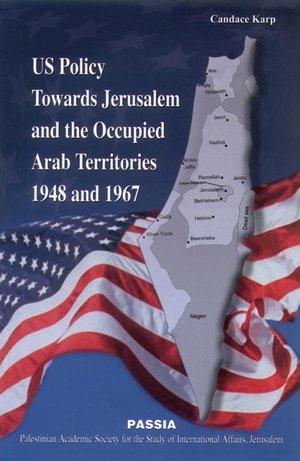US Policy Towards Jerusalem and the Occupied Arab Territories 1948 and 1967
The publication examines the relationship between US policies and strategies in the Middle East and the Arab-Israeli conflict in 1948 and 1967. The first part examines the debate surrounding the status of Jerusalem in 1948 and President Truman’s refusal to support the internationalization of the city. The author argues that it was in Washington’s Cold War and strategic interests to neutral¬ize Jerusalem as a factor in the Arab-Israeli conflict.
The second part deals with the Israeli refusal to withdraw - even after UN Secu¬rity Council Resolution 242 - from the Arab territory it occupied in June 1967, and the way the administration of President Lyndon Johnson dealt with this issue, steered by its own interests in the Middle East.
Forward
i
Part One
Truman, the Arab-Israeli Conflict and Jerusalem
Introduction
The Partition Plan and Internationalisation
The War of Independence and Jerusalem
The Bernadotte Initiative
The American Position
Internationalisation Revisited
An American Presence
After Internationalisation: Jerusalem's Division
Functional Internationalisation: Focus on the Holy Places
Final Attempts
Appendices
Chronology
Maps:
Jerusalem and the Corpus Separatum proposed in 1947
Partitioned Jerusalem, 1948-1967
Who's Who (List of Names)
Bibliography
Part Two
Johnson, the Arab-Israeli Conflict and Borders
Introduction
United States Policy Prior to 1967
Prior to War
The June War and the American Position
During the Aftermath: Debate Continues
The Positions of the Arab States and Israel
A Strategy Agreed Upon: The Johnson Principles
The Glassboro Summit: Johnson and Kosygin Confer
Prelude to Annexation
Washington Backpedals and Retreats
The Stalemate Commences
Appendices
Chronology
Maps:
The Rhodes Armistice Line, 1949
The Middle East after the 1967 June War
List of Names
Bibliography

